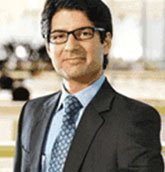8 MinsMarch 13, 2020
Retirement is an inescapable truth of life. Some of us may voluntarily decide to hang your work boots early, while a majority may officially retire at the age of 60-65. Most of us hope to spend our golden years in bliss: pursuing a hobby, travelling
the world, spending time with family and friends and so on. But this is possible only if you have sufficient money. Hence, it is important to ensure that money earned during your working years is sensibly deployed.

Post-retirement, the regular flow of income stops but expenses continue. Hence, the investment should be such that your money compounds well over time and counters inflation. This will ensure financial freedom for you, post-retirement.
Ideally, you should start saving for retirement from the time you start working. But most of us start thinking about retirement only when we are inching towards it. Let us look at some measures you can take for retirement planning, which includes
saving for retirement and planning for regular income post-retirement.
For those between 50 and 60 years
This is the protection phase of your earning life cycle. This means you have accumulated wealth, but still have goals to address (viz. your child’s higher education expenses, wedding expenses, moving into a big house, etc). Here is what
you should do.
- Streamline your inflows and outflows to maximise savings;
- Build your contingency fund to handle exigencies;
- Depending on risk appetite, reset your asset allocation. Those between 50 and 55 can invest 45-50% in equity, 30-35% in debt & fixed income instruments, and 10-15% in gold. Those between 55 and 60 years can invest 35-40% in equity, 45-55%
in fixed income and debt and 10-15% in gold.
- If you have been investing in the Public Provident Fund (PPF) account and it has just matured, it is advisable
to extend it regularly till retirement. Especially, if you have 5 to 10 years for retirement. PPF can be extended after maturity in blocks of 5 years. They can slo be linked to a savings account.
- If you are a salaried employee, check your Employer Provident Fund balance, plus other employer-provided benefits such as gratuity, leave encashment, superannuation, pension, etc. These are very much a part of your retirement plan.
- If you have not yet invested in National Pension System (NPS), do consider it within your retirement planning
basket of investments. If you have already invested in NPS, do continue to make regular investments as it provides additional tax benefit of Rs 50,000 per annum, over and above the Section 80C schemes. Individuals up to age 65 can open
NPS accounts.
For those above 60 years
- This is the distribution phase of your earning life cycle, hence protection of capital should be your top priority. Hence, you should re-balance your portfolio accordingly.
- Around 75-80% of your investment portfolio should be in fixed income generating instruments
- About 20-25% of your portfolio can be in equity instruments. Invest in equities for at least 5-7 years to counter inflation.
- About 5% could be apportioned to gold.
Some key investment avenues that you can use when planning for your retirement are:
1. Mutual Fund schemes – Mutual funds offer market-linked returns. There are a variety of mutual fund schemes available – equity-oriented, debt-oriented,
hybrid, solution-oriented retirement funds and so on. Within each of these are a host of sub-categories with a distinct investment mandate.
[Also Read: Types of Mutual Funds]
As a ground rule, if you are just a few years away from retirement, take limited exposure to equity funds, and consider debt and money market schemes. When selecting debt funds keep in mind that when interest rates are headed lower, longer duration
debt funds are expected to do well, while when interest rates are moving up, shorter duration funds tend to do well. This is because bond prices and yield share an inverse relation.
Use the Systematic Investment Plan (SIP) route to invest while saving for your retirement. And post-retirement use the Systematic Withdrawal Plan (SWP) route to generate regular cash flow.
2. Bank Fixed Deposits – Bank Fixed Deposits offer fixed and secured returns. Invest in Fixed Deposits if you have a lump sum or via Recurring Deposits in which
you invest fixed amount every month. Depending on the need, you may may opt for either monthly or quarterly interest pay-out option to take care of your retirement needs. You can choose the ‘re-investment of interest’ option if
you do not require regular inflow of interest income immediately so that your money can compound. Consider your liquidity needs to select the tenure when you book your bank fixed deposit.
3. Public Provident Fund – PPF offers tax savings while you are working and guaranteed tax-free funds on maturity. It is a government-backed small savings scheme. The current rate of interest on PPF is 7.90% p.a. (compounded
yearly). Once you retire, you can close the PPF account and use the accumulated corpus to purchase an annuity or pension that can take care of your retirement needs. Or you can extend the PPF account post maturity, either with deposits or
without making further deposits. However, to keep the account active without deposits, you would need to make one withdrawal in each year, of any amount within the balance. The balance in the account will continue to earn interest at the applicable
rate. The extension request has to be made before the expiry of 1 year from the maturity date of the PPF account. If not extended on a timely basis, the PPF account shall be considered inactive and such an account cannot be extended or continued
at a later stage.
4. NPS( National Pension System)- For salaried employees working in corporates, NPS provides the option of saving additional tax up to 10% of salary (Basic +DA), if deducted by your employer from your salary. Apart from the tax-saving
benefits, it is a flexible product offering with a choice of pension fund managers, options of asset allocation across investment classes and it provides market-based returns which can help beat inflation in the long term. Current average
returns on NPS since inception are around 10%, considering the average across asset allocation schemes and pension fund managers. The corpus accumulated at the time of retirement is tax-free. You can withdraw from NPS when you reach the age
of 60, or on superannuation or retirement. You also have the option of continuing your individual subscription to NPS beyond the age of 60, up to the age of 70. Once you have completed the required term in NPS and withdraw the accumulated
corpus, a minimum of 40% of the corpus has to be used to purchase an annuity. You have a choice of multiple annuity service providers under NPS. The remaining 60% of the corpus can be withdrawn either as a lump sum or in a phased manner till
the age of 70.
5. RBI Bonds: If you have a lump sum to invest post-retirement and you are looking for secured returns other than fixed deposits, you can consider investing in the 7.75% RBI savings bonds. These bonds offer secured and guaranteed
returns of 7.75% p.a. and the maturity term is 7 years. The minimum investment amount is Rs 1,000 and in multiples of Rs 1,000 thereof, there is no upper limit on investment for these bonds. You can opt for non-cumulative option which provides
half-yearly interest, or a cumulative option which provides interest at the time of maturity. The interest paid on these bonds is taxable.
Two other government-backed small savings schemes you can consider for your retirement planning are National Savings Certificate (NSEC) and Senior Citizen Savings Scheme (SCSS). Both have a five-year tenure and are good options to receive fixed
amounts at regular intervals during your post-retirement years. These are available with post offices.
If you invest sensibly by diversifying your investments across asset classes and investment avenues, recognising your risk profile and optimally insured for health and life, it can pave the path to retiring rich.
Disclaimer: This article is for information purpose only. The views expressed in this article are personal and do not necessarily constitute the views of Axis Bank Ltd. and its employees. Axis Bank Ltd. and/or the author shall not be responsible for any direct / indirect loss or liability incurred by the reader for taking any financial decisions based on the contents and information. Please consult your financial advisor before making any financial decision
Mutual Fund investments are subject to market risk, read all scheme related documents carefully. Axis Bank Ltd is acting as an AMFI registered MF Distributor (ARN code: ARN-0019). Purchase of Mutual Funds by Axis Bank’s customer is purely voluntary and not linked to availment of any other facility from the Bank. *T&C apply















